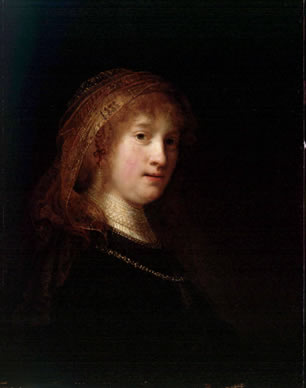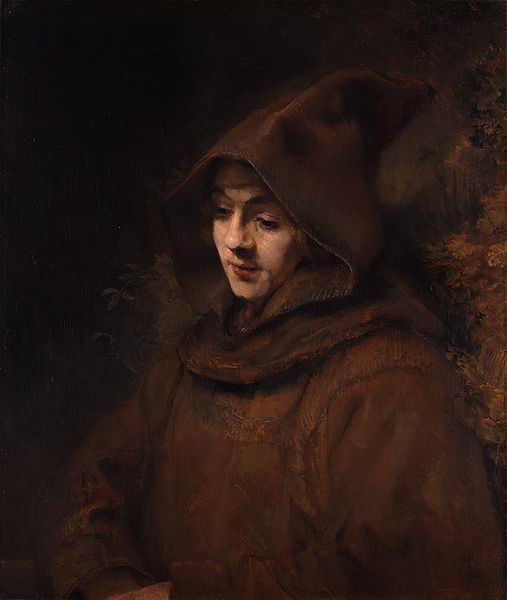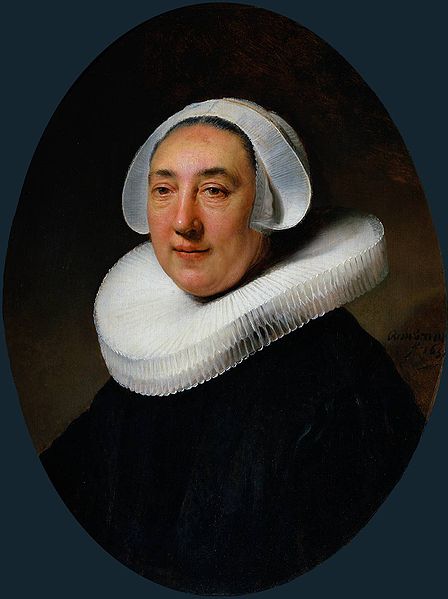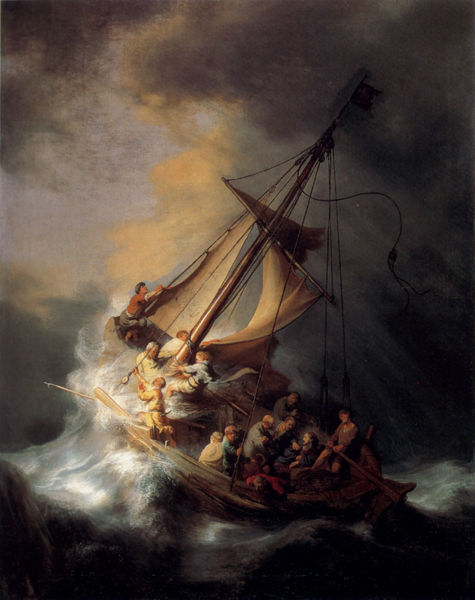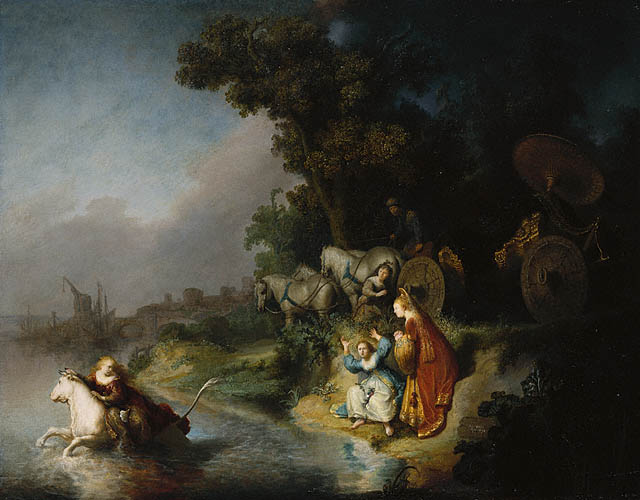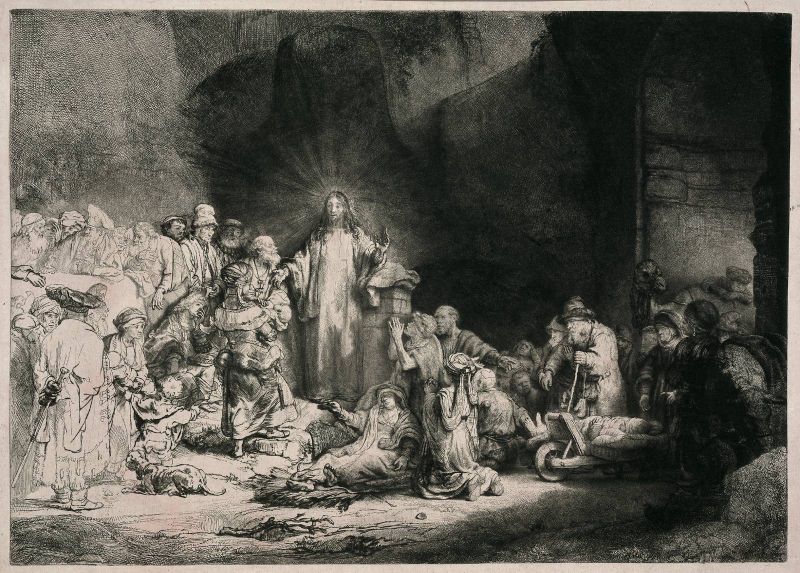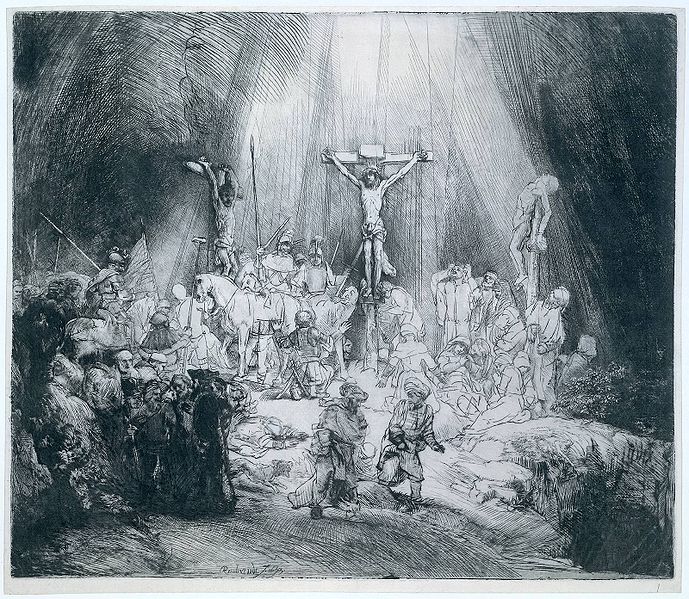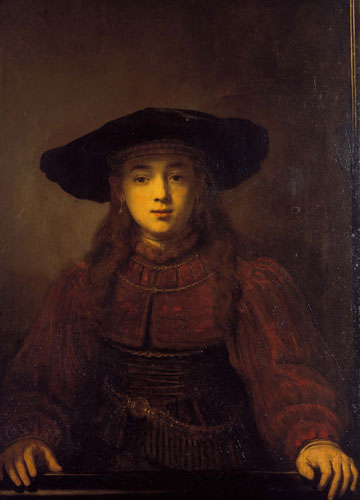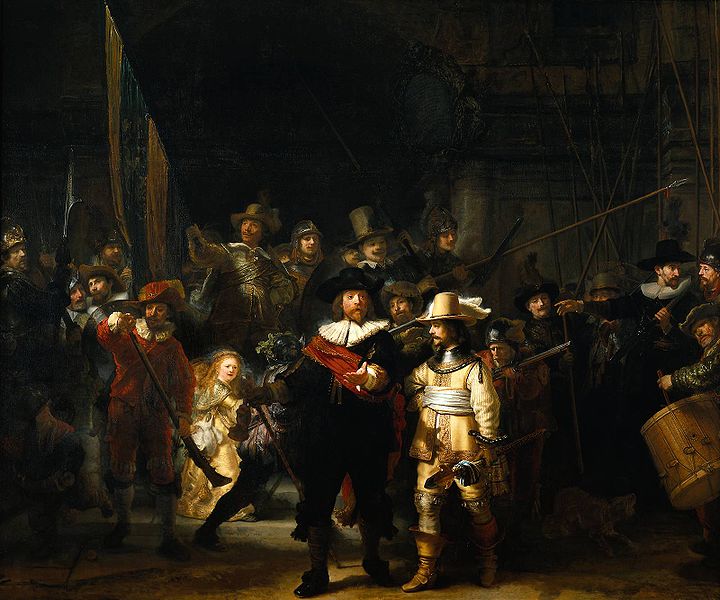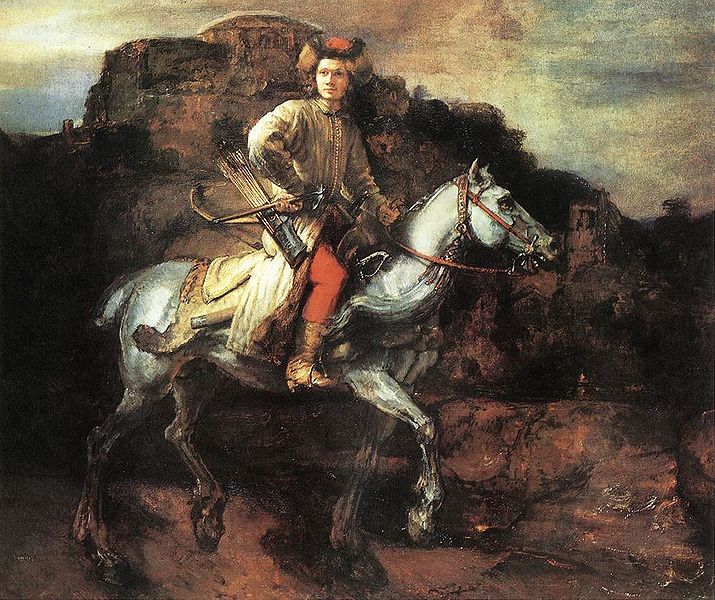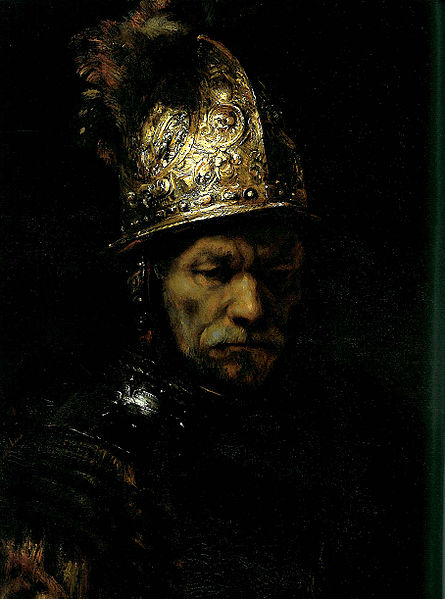<Back to Index>
- Economist Vilfredo Federico Damaso Pareto, 1848
- Painter Rembrandt Harmenszoon van Rijn, 1606
- Explorer and Governor of Puerto Rico Juan Ponce de León y Figueroa, 1474
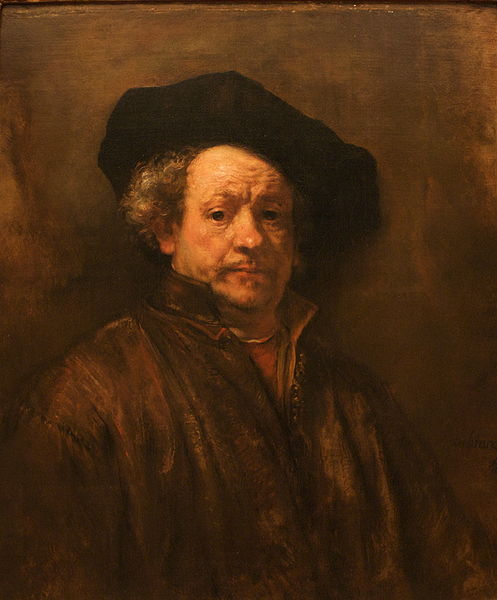
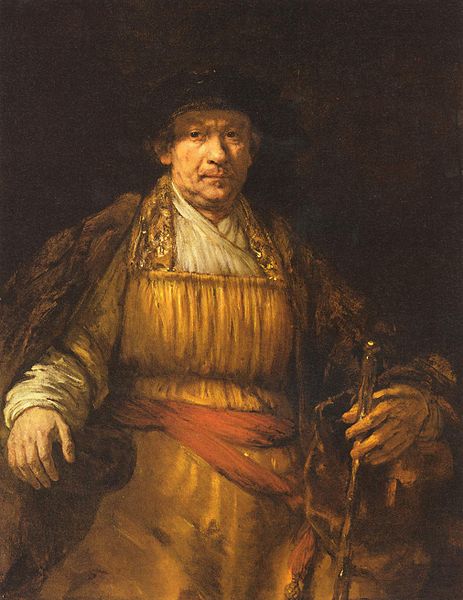
Rembrandt Harmenszoon van Rijn (July 15, 1606 – October 4, 1669) was a Dutch painter and etcher. He is generally considered one of the greatest painters and printmakers in European art history and the most important in Dutch history. His contributions to art came in a period that historians call the Dutch Golden Age.
Having
achieved youthful success as a portrait painter, his later years were
marked by personal tragedy and financial hardship. Yet his etchings and
paintings were popular throughout his lifetime, his reputation as an
artist remained high, and for twenty years he taught nearly every important Dutch painter. Rembrandt's greatest creative triumphs are exemplified especially in his portraits of his contemporaries, self-portraits and illustrations of scenes from the Bible.
His self-portraits form a unique and intimate biography, in which the
artist surveyed himself without vanity and with the utmost sincerity. In both painting and printmaking he exhibited a complete knowledge of classical iconography,
which he molded to fit the requirements of his own experience; thus,
the depiction of a biblical scene was informed by Rembrandt's knowledge
of the specific text, his assimilation of classical composition, and
his observations of Amsterdam's Jewish population. Because of his empathy for the human condition, he has been called "one of the great prophets of civilization." Rembrandt Harmenszoon van Rijn was born on July 15, 1606 in Leiden, the Netherlands. He was the ninth child born to Harmen Gerritszoon van Rijn and Neeltgen Willemsdochter van Zuytbrouck. His family was quite well-to-do; his father was a miller and his mother was a baker's daughter. As a boy he attended Latin school and was enrolled at the University of Leiden,
although according to a contemporary he had a greater inclination
towards painting; he was soon apprenticed to a Leiden history painter, Jacob van Swanenburgh, with whom he spent three years. After a brief but important apprenticeship of six months with the famous painter Pieter Lastman in Amsterdam, Rembrandt opened a studio in Leiden in 1624 or 1625, which he shared with friend and colleague Jan Lievens. In 1627, Rembrandt began to accept students, among them Gerrit Dou. In 1629 Rembrandt was discovered by the statesman Constantijn Huygens, the father of Christiaan Huygens (a
famous Dutch mathematician and physicist), who procured for Rembrandt
important commissions from the court of The Hague. As a result of this
connection, Prince Frederik Hendrik continued to purchase paintings from Rembrandt until 1646. At
the end of 1631, Rembrandt moved to Amsterdam, then rapidly expanding
as the new business capital of the Netherlands, and began to practice
as a professional portraitist for the first time, with great success.
He initially stayed with an art dealer, Hendrick van Uylenburg, and in 1634, married Hendrick's cousin, Saskia van Uylenburg. Saskia came from a good family: her father had been lawyer and burgemeester (mayor) of Leeuwarden. When Saskia, as the youngest daughter, became an orphan, she lived with an older sister in Het Bildt. They were married in the local church of St. Annaparochie without the presence of his relatives. In
the same year, Rembrandt became a burgess of Amsterdam and a member of
the local guild of painters. He also acquired a number of students, among them Ferdinand Bol and Govert Flinck. In
1635 Rembrandt and Saskia moved into their own house, renting in
fashionable Nieuwe Doelenstraat. In 1639, they moved to a prominent
house (now the Rembrandt House Museum) in the Jodenbreestraat in what was becoming the Jewish quarter; the mortgage to finance the 13,000 guilder purchase would be a primary cause for later financial difficulties. He
should easily have been able to pay it off with his large income, but
it appears his spending always kept pace with his income, and he may
have made some unsuccessful investments. It was there that Rembrandt frequently sought his Jewish neighbors to model for his Old Testament scenes. Although
they were by now affluent, the couple suffered several personal
setbacks; their son Rumbartus died two months after his birth in 1635
and their daughter Cornelia died at just 3 weeks of age in 1638. In
1640, they had a second daughter, also named Cornelia, who died after
living barely over a month. Only their fourth child, Titus, who was born in 1641, survived into adulthood. Saskia died in 1642 soon after Titus's birth, probably from tuberculosis. Rembrandt's drawings of her on her sick and death bed are among his most moving works. During Saskia's illness, Geertje Dircx was
hired as Titus' caretaker and nurse and probably also became
Rembrandt's lover. She would later charge Rembrandt with breach of
promise and was awarded alimony of 200 guilders a year. Rembrandt worked to have her committed for twelve years to an asylum or poorhouse (called a "bridewell") at Gouda, after learning Geertje had pawned jewelry that had once belonged to Saskia, and which Rembrandt had given her. In the late 1640s Rembrandt began a relationship with the much younger Hendrickje Stoffels, who had initially been his maid. In 1654 they had a daughter, Cornelia, bringing Hendrickje a summons from the Reformed Church to
answer the charge "that she had committed the acts of a whore with
Rembrandt the painter". She admitted this and was banned from receiving
communion. Rembrandt was not summoned to appear for the Church council
because he was not a member of the Reformed Church. The
two were considered legally wed under common law, but Rembrandt had not
married Henrickje, so as not to lose access to a trust set up for Titus
in his mother's will. Rembrandt
lived beyond his means, buying art (including bidding up his own work),
prints (often used in his paintings) and rarities, which probably
caused a court arrangement to avoid his bankruptcy in
1656, by selling most of his paintings and large collection of
antiquities. The sale list survives and gives us a good insight into
his collections, which apart from Old Master paintings
and drawings included busts of the Roman Emperors, suits of Japanese
armor among many objects from Asia, and collections of natural history
and minerals; the prices realized in the sales in 1657 and 1658 were
disappointing. He also had to sell his house and his printing-press and move to more modest accommodation on the Rozengrachtin 1660. The authorities and his creditors were generally accommodating to him, except for the Amsterdam painters' guild,
who introduced a new rule that no one in Rembrandt's circumstances
could trade as a painter. To get round this, Hendrickje and Titus set
up a business as art-dealers in 1660, with Rembrandt as an employee. In 1661 he (or rather the new business) was contracted to complete work for the newly built city hall, but only after Govert Flinck, the artist previously commissioned, died without beginning to paint. The resulting work, The Conspiracy of Claudius Civilis, was rejected and returned to the painter; the surviving fragment is only a fraction of the whole work. It was around this time that Rembrandt took on his last apprentice, Aert de Gelder. In 1662 he was still fulfilling major commissions for portraits and other works. When Cosimo III de' Medici, Grand Duke of Tuscany visited Amsterdam in 1667, he visited Rembrandt at his house. Rembrandt
outlived both Hendrickje, who died in 1663, and Titus, who died in
1668, leaving a baby daughter. Rembrandt died within a year of his son,
on October 4, 1669 in Amsterdam, and was buried in an unmarked grave in
the Westerkerk. In a letter to Huyghens, Rembrandt offered the only surviving explanation of what he sought to achieve through his art: the greatest and most natural movement, translated from de meeste en de natuurlijkste beweegelijkheid.
The word "beweechgelickhijt" is also argued to mean "emotion" or
"motive." Whether this refers to objectives, material or otherwise is
open to interpretation; either way, Rembrandt seamlessly melded the
earthly and spiritual as has no other painter in Western art. Among the more prominent characteristics of his work are his use of chiaroscuro, the theatrical employment of light and shadow derived from Caravaggio, or, more likely, from the Dutch Caravaggisti, but adapted for very personal means. Also
notable are his dramatic and lively presentation of subjects, devoid of
the rigid formality that his contemporaries often displayed, and a
deeply felt compassion for mankind, irrespective of wealth and age. His
immediate family — his wife Saskia, his son Titus and his common-law wife
Hendrickje — often figured prominently in his paintings, many of which had mythical, biblical or historical themes. Throughout
his career Rembrandt took as his primary subjects the themes of
portraiture, landscape and narrative painting. For the last, he was
especially praised by his contemporaries, who extolled him as a
masterful interpreter of biblical stories for his skill in representing
emotions and attention to detail. Stylistically,
his paintings progressed from the early 'smooth' manner, characterized
by fine technique in the portrayal of illusionistic form, to the late
'rough' treatment of richly variegated paint surfaces, which allowed
for an illusionism of form suggested by the tactile quality of the
paint itself. A
parallel development may be seen in his skill as a printmaker. In the
etchings of his maturity, particularly from the late 1640s onward, the
freedom and breadth of his drawings and paintings found expression in
the print medium as well. The works encompass a wide range of subject
matter and technique, sometimes leaving large areas of white paper to
suggest space, at other times employing complex webs of line to produce
rich dark tones.
